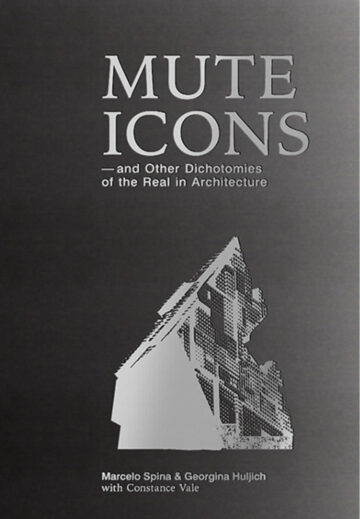Interrogating historical, contemporary, and — more importantly— speculative images, “Mute Icons & Other Dichotomies of the Real in Architecture” aims to construct a viable alternative to the icon’s cliché and exhausted form of communication, positing one that is decidedly introverted and withdrawn. Developing a language and a sensibility for discovering simultaneous, contradictory, and even unexpected readings of architectural form, Marcelo Spina & Georgina Huljich / PATTERNS’s new book Mute Icons, aims to carve out a niche in contemporary culture and history by suggesting that far from being a crowd-pleaser, architecture can persist within society as a constructive cultural and social irritant.
No longer concerned with narrative excesses or with the “shock and awe” of sensation making; the mute icon becomes intriguing in its deceptive indifference towards context, perplexing in its unmitigated apathy towards the body. Object and building, absolute and unstable, anticipated and strange, manifest and withdrawn, such is the dichotomy of mute icons. Dwelling in the paradox between silence and sign and aiming to debunk a false dichotomy between critical discourse, a pursuit of formal novelty and the attainment of social ethics, “Mute Icons & Other Dichotomies of the Real in Architecture” reaffirms the cultural need and socio-political relevance of the architectural image, suggesting a much-needed resolution to the present but incorrect antagonism between formal innovation, social responsibility and economic austerity. Intersecting relevant historical antecedents and polemic theoretical speculations with original design concepts and provocative representations of PATTERNS’s recent work, the book aspires to stimulate authentic speculations on the real.
Part history, part theory, and part monographic atlas, the book includes contributions by Georgina Huljich, Guillermo Martinez, Ciro Najle, Marcelo Spina, Brett Steele, and Constance Vale.
